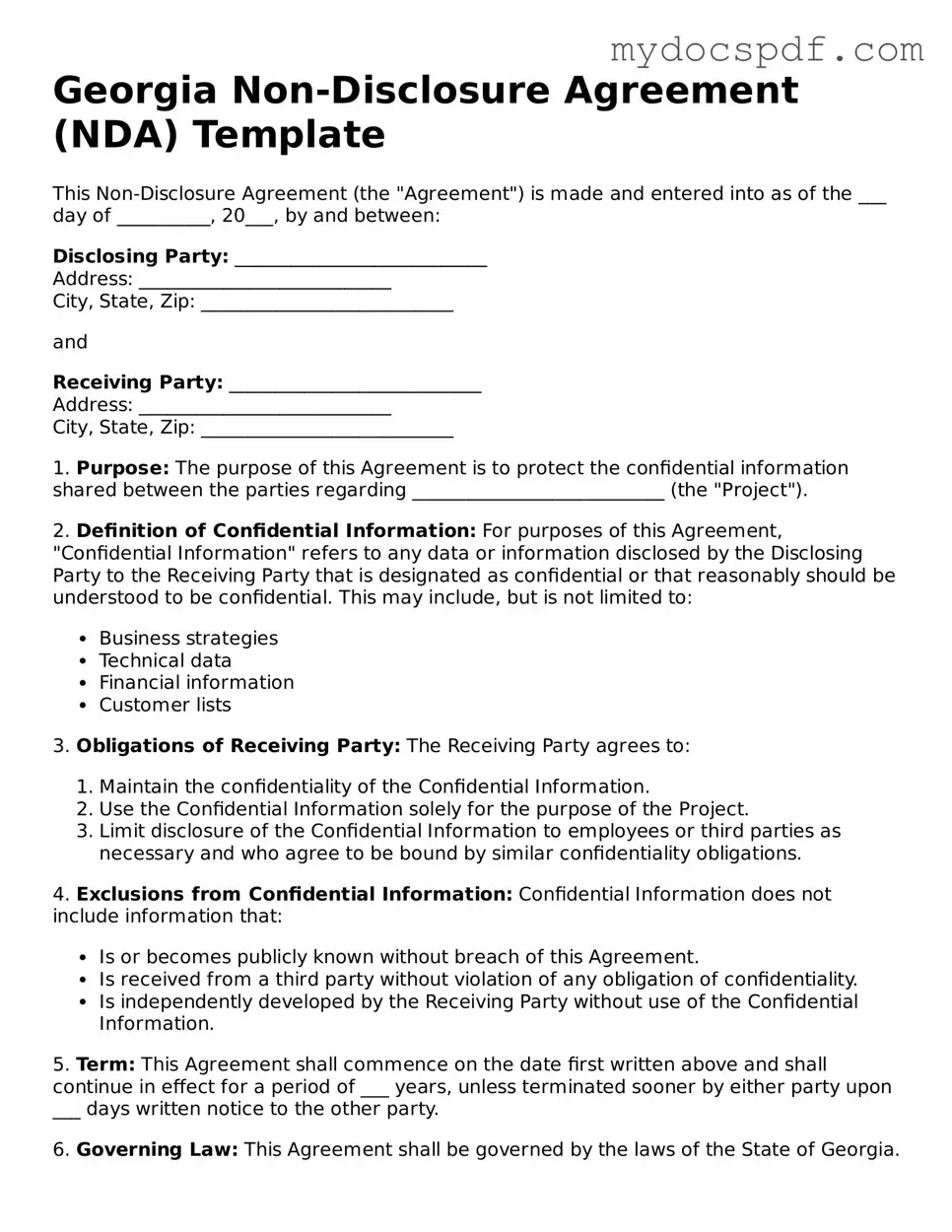Georgia Non-Disclosure Agreement (NDA) Template
This Non-Disclosure Agreement (the "Agreement") is made and entered into as of the ___ day of __________, 20___, by and between:
Disclosing Party: ___________________________
Address: ___________________________
City, State, Zip: ___________________________
and
Receiving Party: ___________________________
Address: ___________________________
City, State, Zip: ___________________________
1. Purpose: The purpose of this Agreement is to protect the confidential information shared between the parties regarding ___________________________ (the "Project").
2. Definition of Confidential Information: For purposes of this Agreement, "Confidential Information" refers to any data or information disclosed by the Disclosing Party to the Receiving Party that is designated as confidential or that reasonably should be understood to be confidential. This may include, but is not limited to:
- Business strategies
- Technical data
- Financial information
- Customer lists
3. Obligations of Receiving Party: The Receiving Party agrees to:
- Maintain the confidentiality of the Confidential Information.
- Use the Confidential Information solely for the purpose of the Project.
- Limit disclosure of the Confidential Information to employees or third parties as necessary and who agree to be bound by similar confidentiality obligations.
4. Exclusions from Confidential Information: Confidential Information does not include information that:
- Is or becomes publicly known without breach of this Agreement.
- Is received from a third party without violation of any obligation of confidentiality.
- Is independently developed by the Receiving Party without use of the Confidential Information.
5. Term: This Agreement shall commence on the date first written above and shall continue in effect for a period of ___ years, unless terminated sooner by either party upon ___ days written notice to the other party.
6. Governing Law: This Agreement shall be governed by the laws of the State of Georgia.
7. Entire Agreement: This Agreement constitutes the entire understanding between the parties regarding the subject matter and supersedes all prior agreements and understandings.
IN WITNESS WHEREOF, the parties hereto have executed this Non-Disclosure Agreement as of the date first above written.
Disclosing Party: ___________________________
Signature: ___________________________
Date: ___________________________
Receiving Party: ___________________________
Signature: ___________________________
Date: ___________________________
